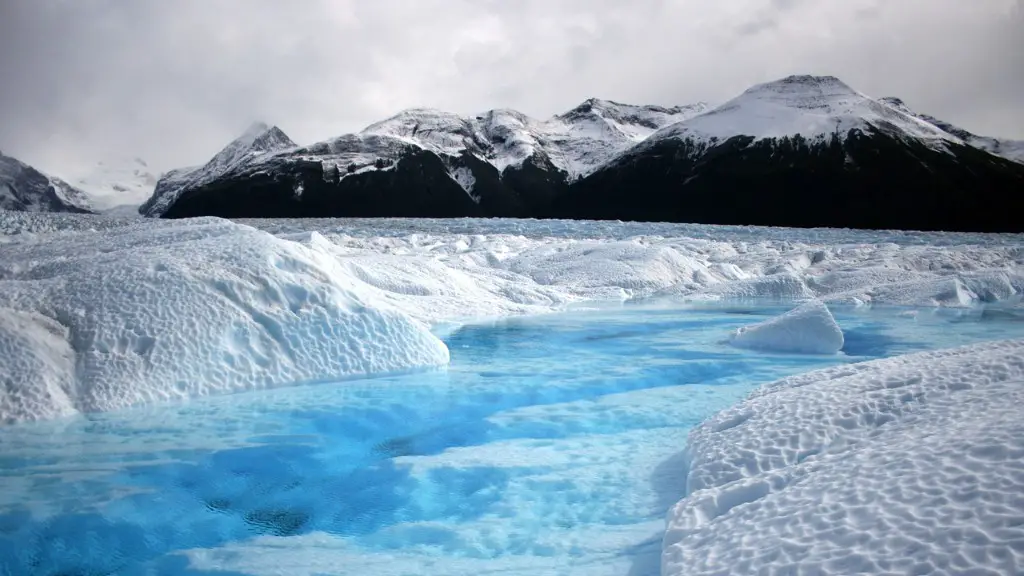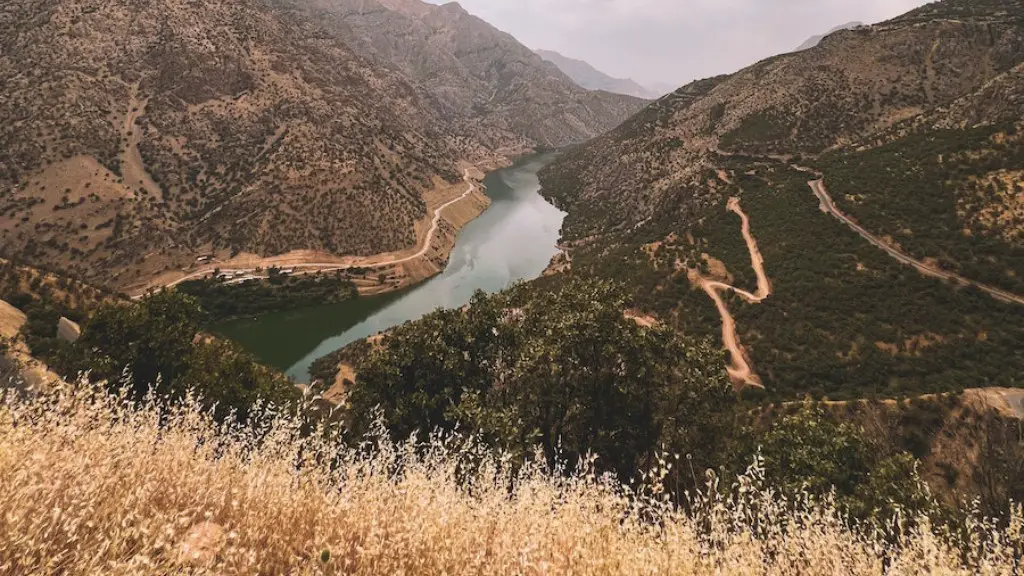The Mississippi River is the second-longest river in the United States, stretching from Minnesota to the Gulf of Mexico. It has been an essential source of commerce and transportation ever since its discovery, and a significant factor in the development of the United States. Throughout history, a variety of people have explored the Mississippi River, beginning in the 1500s.
One of the first to explore the Mississipi River was the Spanish explorer Hernando de Soto. In 1541, de Soto embarked on a three-year journey from Florida to the Mississippi River. He made detailed descriptions of the native people and their customs along the way, and may have been the first European to see the river. He crossed over the river in 1541 near present-day Memphis, Tennessee, becoming the first European to set foot in what is now Mississippi.
The next group of people to explore Mississippi were French explorers Louis Jolliet and Jacques Marquette. Marquette, a Catholic missionary, and Jolliet, a fur trader and French explorer, crossed the Mississippi River in 1673. Starting in Canada, they made their way to the Gulf of Mexico, passing through Wisconsin, Iowa, Illinois and present-day Missouri, Arkansas and Louisiana. They made the first complete map of the Mississippi River and noted its great importance in the development of the United States.
The next person to explore the river was Robert La Salle. He explored the area near the Great Lakes in 1679 and reached the Mississippi River in 1681. La Salle is credited with naming the river and claiming the area for France. He used the river to establish a trading post in present-day Arkansas, and he created the first permanent European settlement in the present-day United States. The settlement lasted for two years before it was destroyed by the Spanish.
In 1798, the first steamboat was launched on the Mississippi River. This was the beginning of a commercial maritime industry on the river and opened up the interior of the United States for travel and trade. The steamboats were powered by steam engines, making them much faster and more efficient than the traditional wooden ships. They made transportation along the river much easier, allowing goods and people to travel the river more quickly.
In the late 1800s, the U.S. government began to construct hundreds of locks and dams along the Mississippi. These locks and dams allowed large ships to travel the river without danger of becoming stuck in shallow areas. The government also began an environmental rehabilitation project on the river, hoping to restore wildlife and vegetation along the banks, as well as improve water quality. As a result, the Mississippi River is now one of the most popular recreational destinations in the United States.
Today the Mississippi River is a vital part of life in the United States. It serves as an important transportation and shipping route for goods, and is also a popular recreational spot for fishing, boating and other activities. People from all over the world come to explore and experience the beauty of the Mississippi River.
Lords of the River
Exploring the Mississippi River was, and still remains a dangerous endeavor. It is the second largest, and most powerful river in the United States, and the first European explorers certainly recognized this. The Native Americans of the area had long-established trade routes on the river, and lords of the river who had a monopoly on trade along the great waterways. This meant that as the first European explorers arrived, they were met with suspicion, reluctance, and sometimes even aggression.
Hernando de Soto consistently had to douse the flames of native hostility, and it was only with his diplomatic guile and charm, that he was able to negotiate his way across the rivers of the U.S. and eventually reach the Mississippi River. The rulers of the Mississippi River were the Sioux, and their influence over the Mississippi made them very powerful and allowed them to dominate trade along its banks.
To this day, the Sioux still have a lot of cultural and economic control over the Mississippi River, and they are responsible for maintaining many of the ancient trading routes and customs. This close connection to nature has thankfully allowed them to restore the river and its wildlife.
Mississippi Delta
The Mississippi Delta is one of the most important and unique ecosystems in the United States. It is the largest alluvial floodplain in North America and home to various species of birds, mammals, fish, and reptiles. It is also home to the Delta Woodland, one of the most diverse hardwood forests in the world, as well as a variety of small towns, plantation homes and historic sites.
The Mississippi Delta is an important part of the American landscape and an integral part of the American economy. It is an important agricultural region, providing a variety of products for export, as well as a popular tourist destination. It is also an important region for the shipping and oil industries, as the river has been an important transportation and shipping route since colonial times.
The Delta has seen a lot of change in recent years, with the construction of large levees and dams allowing ships to travel up and down the Mississippi. It has also seen a shift in the population base as people have moved away from the area searching for economic opportunity. This has impacted the environment, as well as the culture and customs of the people who call the Delta home.
Impact of Explorers
The exploration of the Mississippi River has had a lasting impact on the United States. From the start, the river has served as an important route of trade, transportation, and exploration. It has been the gateway to the rest of the United States, from the Gulf of Mexico to the Great Lakes.
The exploration of the Mississippi River also opened up the interior of the U.S. for commerce and exploration. It allowed for the growth of the American economy and created a new way of life for the people who lived along its banks. The people who explored and mapped the river were not only explorers, but pioneers in the development and growth of the country.
The Mississippi River continues to be an important part of the American experience. It is a source of recreation and adventure, an essential part of the natural environment, and an important part of the nation’s economy. Exploring the Mississippi River is an adventure, and a journey through centuries of exploration and discovery.
Conservation and Preservation
For the last several decades the various stakeholders in the Mississippi River have worked together to protect, conserve and preserve the river and its floodplain. These efforts have included projects such as Little River Drainage District, the Upper Mississippi River Conservation Committee, the Mississippi River Basin Alliance and the Mississippi River Basin Commission.
These initiatives have sought to restore, protect, and improve the health and quality of the river and its tributaries. They have also worked to restore wildlife and fish habitats, protect natural areas, reduce pollution, and promote responsible land and water usage. In addition, these projects have helped to create new recreational opportunities and improve access to the river for the public.
The collective conservation efforts on the Mississippi River and its tributaries have helped to ensure the long-term health and integrity of the river and its habitats. This includes protecting and preserving rare and endangered species, reducing pollution and runoff, replanting native plants, and protecting natural habitats.
Climate Change and the Mississippi River
The Mississippi River is particularly susceptible to the effects of climate change, especially in the form of drought and flooding. The Mississippi River Basin is already in danger due to the overuse of water from the river and its tributaries, and climate change will likely aggravate this situation. Warmer temperatures mean less snow in the winter, and in turn, less runoff in the spring, which can lead to lower river levels.
Likewise, climate change could lead to more extreme weather patterns, such as heavy rainfall and seasonal floods, which could result in major disruptions to agricultural and transportation industries along the river. As a result, it is important for those living, working and playing in the Mississippi River Basin to be aware of the potential impacts of climate change and to be proactive in preparing for and responding to this new reality.
Climate change presents many challenges to the Mississippi River Basin, but it also presents opportunities. For example, the water levels of the river could rise in some areas, creating the potential for the construction of new dams and the development of hydroelectric power sources, which would significantly reduce the reliance on fossil fuel energy. Additionally, by protecting and restoring wetlands and coastal areas, there could be an increase in the abundance of wildlife, leading to greater recreational potential.
Conclusion
Exploring the Mississippi River has been a way for many Europeans to expand the known U.S. landscape since the 1500s. The commercial maritime industry that was created with the launch of the first steamboat marked the beginning of the river’s commercial significance. The environmental rehabilitation project that began in the late 1800s worked to restore wildlife and vegetation along the banks, allowing people to use the river for recreation today. Progress to protect the river is still continuing today, as more initiatives are in place to conserve and preserve the river and its environment. Climate change is an issue that is increasingly impacting the Mississippi River, making it important for those in the Mississippi River Basin to be aware of the potential impacts and to be proactive in responding. Despite these challenges, the Mississippi River is a source of adventure and beauty, and a vital part of the American experience.





